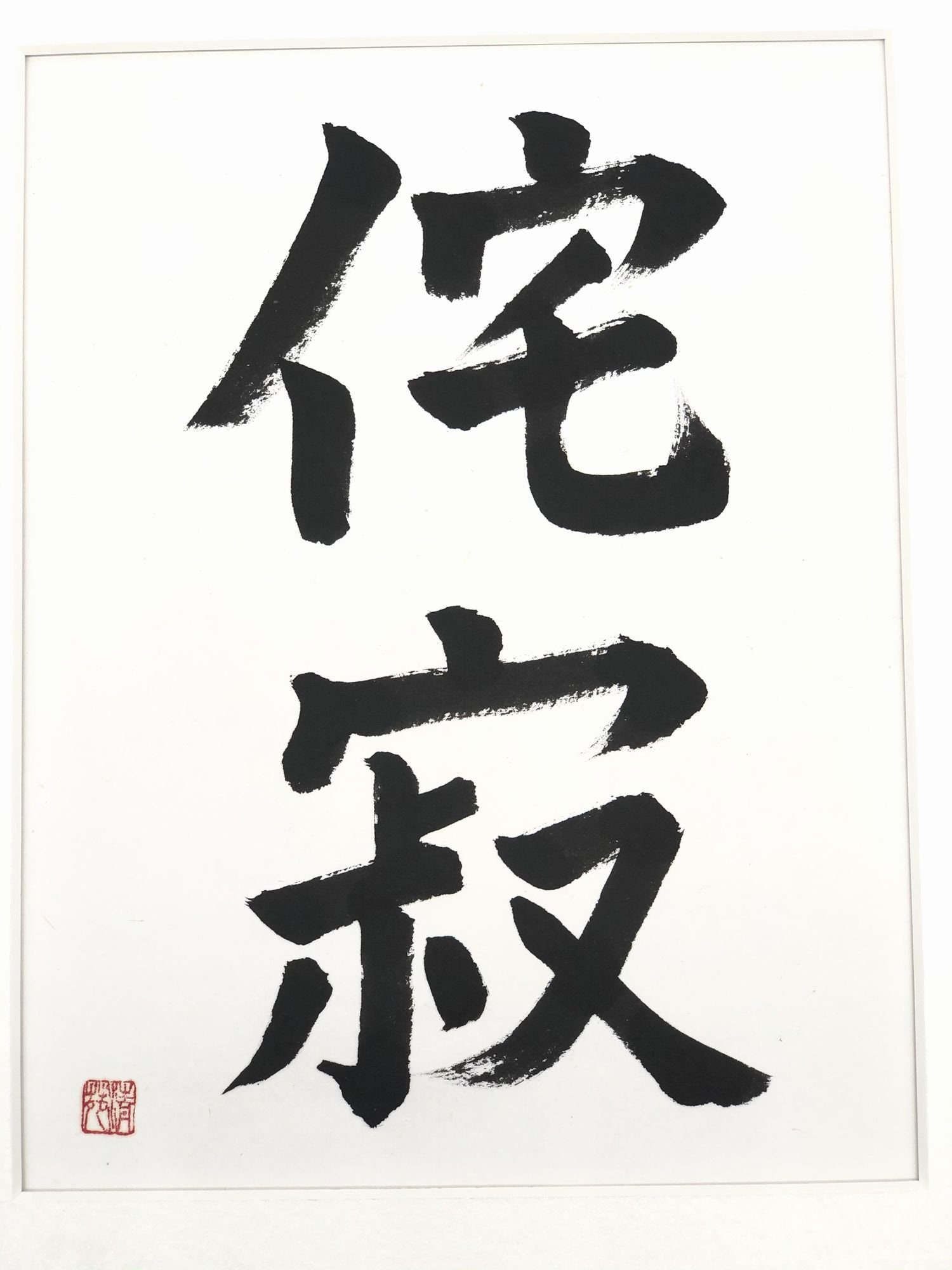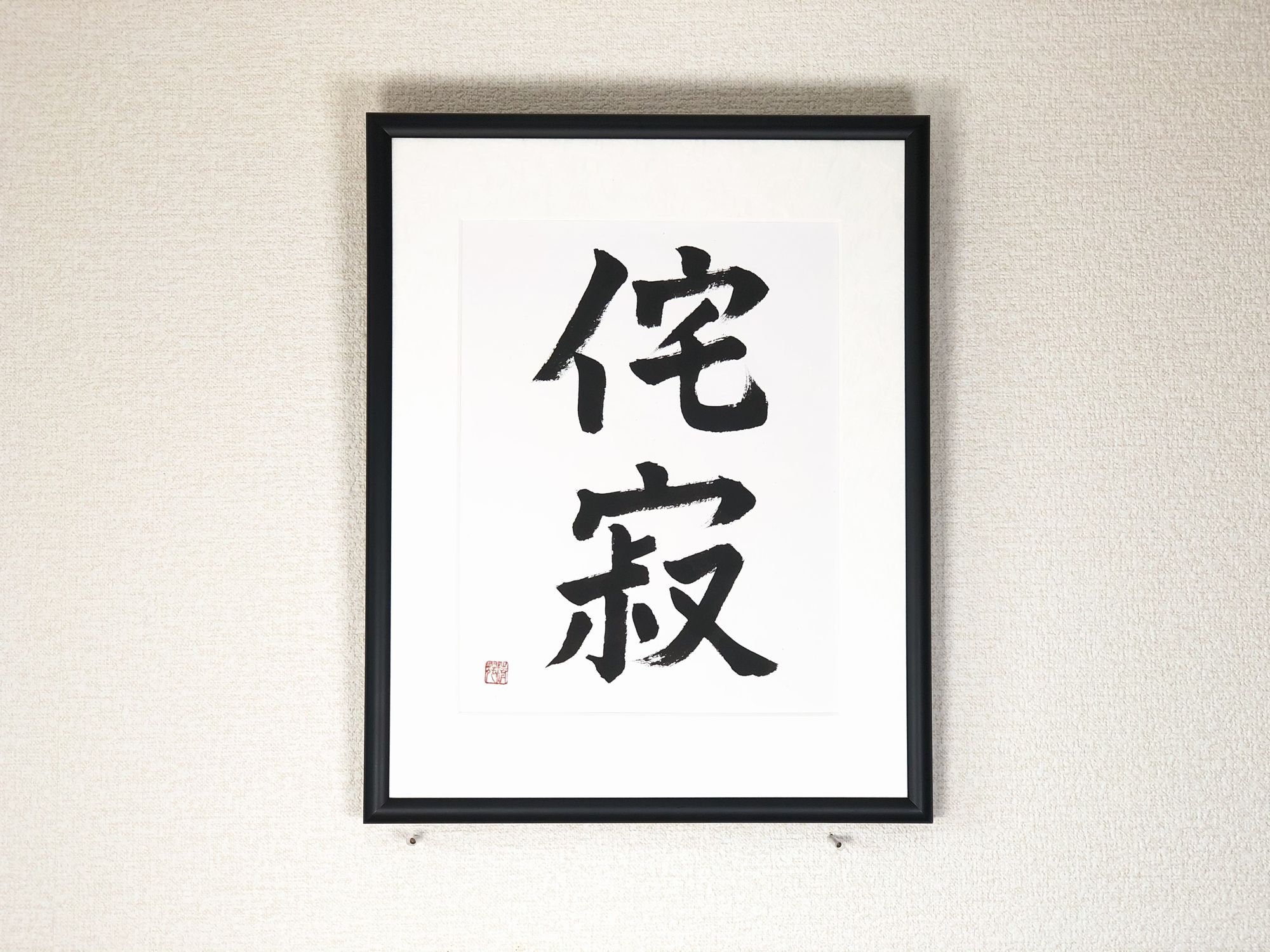
Wabi Sabi / Original Japanese Calligraphy / Kanji / Shodo / Etsy
The phrase collects two kanji characters, which you might have guessed: wabi (侘) and sabi (寂).. Wabi sabi is a beauty of things imperfect, impermanent, and incomplete. It is a beauty of.

Set of 4 Unframed Wabi Sabi Kanji Abstract Wall Art Prints Etsy
It is prevalent in many forms of Japanese art. [4] [5] Wabi-sabi is a composite of two interrelated aesthetic concepts, wabi ( 侘) and sabi ( 寂). According to the Stanford Encyclopedia of Philosophy, wabi may be translated as "subdued, austere beauty," while sabi means "rustic patina ." [6]

Wabi Sabi Kanji Definition Wall Art Japanese Kanji Kanji Etsy
[ さび 寂] noun English Meaning (s) for 寂 noun patina; antique look elegant simplicity well-trained voice Add to Meanings for each kanji in 寂 寂 loneliness; quietly; mellow; mature; death of a priest Kanji Details » Stroke Order Diagrams for 寂 Kanji Details » Add to

Wabisabi Palabras, Logotypes
[ わび 侘 · さび 寂] noun Alternate Written Forms: わびさび » 侘 び 寂 び [ わ 侘 · び · さ 寂 · び] » 詫 び 寂 び [ わ 詫 · び · さ 寂 · び] Irregular Kanji » ワビサビ » Root Words: 侘 + 寂 [ わび 侘 + さび 寂] English Meaning (s) for 侘寂 noun wabi-sabi; aesthetic sense in Japanese art centered on the acceptance of transience and imperfection Add to Meanings for each kanji in 侘寂

Pin on Japanese Calligraphy [Liccagraphy]
The meaning of 'wabi sabi'. In an entry titled "Japanese Aesthetics," SEP translates "wabi" to "simple, austere beauty" and "sabi" to "rustic patina." "Wabi" praises emptiness, while "sabi" honors decay. Interestingly enough, empty and decay are two words that, in the American vernacular, are typically considered negative characteristics.

Wabisabi Original Japanese Calligraphy Kanji art work Etsy
According to Beth Kempton, Japanese culture expert and author of Wabi Sabi: Japanese Wisdom for a Perfectly Imperfect Life, "over time, the word sabi has come to communicate a deep and tranquil beauty that emerges with the passage of time. Visually, we recognise this as the patina of age, weathering, tarnishing and signs of antiquity.".

Wabi Sabi Kanji Wabi sabi, Im not perfect, Transience
Wabi-sabi ( 侘 寂 ) represents a comprehensive Japanese world view or aesthetic centered on the acceptance of transience and imperfection. The aesthetic is sometimes described as one of beauty that is "imperfect, impermanent, and incomplete".

Wabi Sabi / Original Japanese Calligraphy / Kanji / Shodo / Etsy
"Wabi-sabi" is one of Japan's traditional aesthetic sensibilities, having grown out of Zen. Japan has long had a variety of aesthetic senses, such as "mono no aware" and "iki", but wabi-sabi is one Japanese term that has spread worldwide, and can now be considered an international aesthetic. This sense of beauty has influenced many aspects of Japanese culture, from literatu.

Wabi Sabi / Original Japanese calligraphy / Kanji / Shodo / Etsy
The kanji written on the surface of the stone seems insignificant when read alone. However, when each is read in combination with the central bowl, ("ware tada o shiru. Wabi-Sabi in the World Today From the tea ceremony to the 21st century, wabi-sabi continues to evolve. You may see wabi-sabi's influence on international design as many.

Wabi Sabi Symbol chinesecalligraphy chinese calligraphy aesthetic
ワビサビ Dictionary Definition of 侘寂 Reading 侘 わび 寂 さび わびさび wabisabi Meaning usually written using kana alone noun wabi-sabi, aesthetic sense in Japanese art centered on the acceptance of transience and imperfection (explanation) How to write Not available for this kanji. Show stroke number Kanji in this word 侘 8 strokes proud,lonely 寂 11 strokes

Wabi Sabi / Original Japanese Calligraphy / Kanji / Shodo / Etsy Canada
The term wabi sabi is composed of two kanji characters. The second part, sabi (寂) is said to date back to the eighth century, when it was used to designate desolation in a poetic way. From the twelfth century, the term evolved and referred more precisely to the delightful contemplation of what is old and worn.

Wabi sabi Idee per tatuaggi, Tatuaggi, Calligrafia giapponese
Wabi-Sabi: A Japanese Aesthetic as Worldview Wabi-Sabi and Understanding Japan A philosophy and aesthetic as worldview April 11, 2016 • words written by Jack • Art by Aya Francisco "Western beauty is radiance, majesty, grandness and broadness. In comparison, Eastern beauty is desolateness. Humility. Hidden beauty."

Wabisabi Original Japanese Calligraphy Kanji art work Etsy
侘び寂び is known to describe the sensibility of the Japanese people, but it is an old word originally. 侘 is rarely used in our daily life, and 寂 is kanji for loneliness, and is still commonly used, but it is never read as sabi with 寂び. Maybe young people nowadays can't read it. So, I think that it is sometimes written in hiragana.

Wabi Sabi / Original Japanese Calligraphy / Kanji / Shodo / Etsy
The term wabi-sabi is composed of two kanji characters. The second part, sabi (寂) is said to date back to the eighth century when it was used to designate desolation. Over time, the term evolved and referred more precisely to the delightful contemplation of what is old and worn and the beauty of faded or withered things.

Wabi Sabi / Original Japanese Calligraphy / Kanji / Shodo / Etsy Canada
Shop for Bestsellers, New-releases & More. Best Prices on Millions of Titles.

Wabi Sabi / Original Japanese Calligraphy / Kanji / Shodo / Etsy
Wabi-sabi is the beauty of things imperfect, impermanent, and incomplete. It is the beauty of things modest and humble. It is the beauty of things unconventional. The concepts of wabi-sabi correlate with the concepts of Zen, as the first Japanese involved with wabi-sabi were tea masters, priests, and monks who practiced Zen.